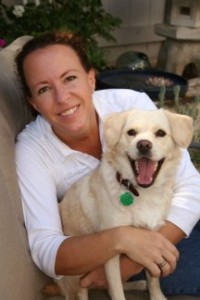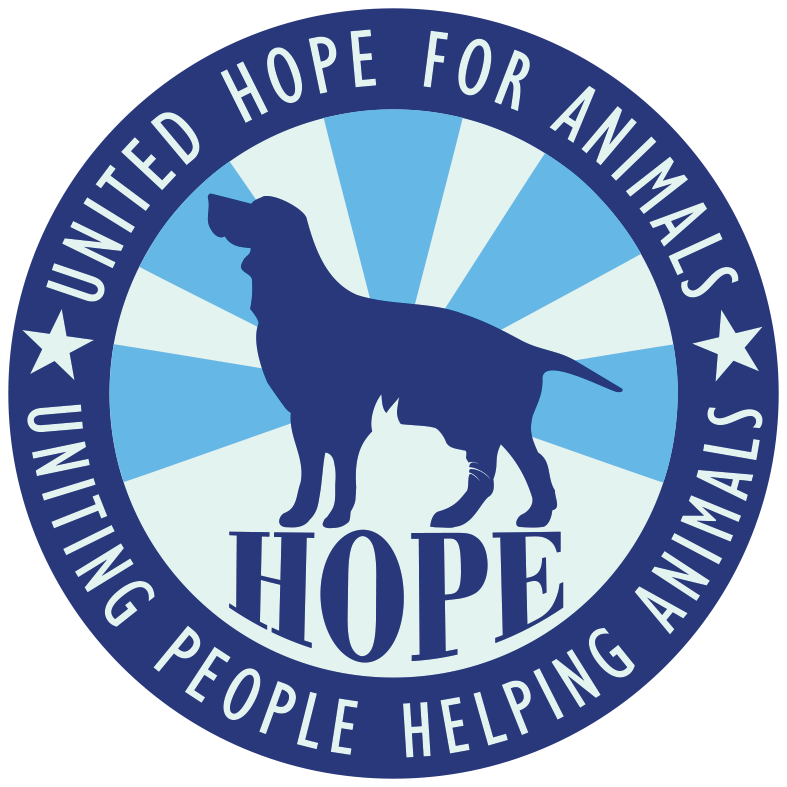Trooper, Leyla & The Murch Family
Trooper & Leyla, Trooper’s Mom
A backyard breeder in the LA area who bred pure bred puppies to sell for profit wanted to dump a broken puppy and her momma. This backyard breeder threw momma ‘Leyla’ and Star (one of her puppies, now named Trooper) over the fence of one of one of our volunteer foster people. The puppies’ front left leg was injured. We thought at the time that it was because of the drop over the fence. However, we were suspicious that the reason why the breeder was discarding the puppy was because the puppy was (as the breeder would put it) damaged goods.
Her injured leg was the very reason why he was tossing her away. But we did not know at the time all we could do was assume her leg was injured from the drop over the fence and get her to a specialist as soon as possible. Sadly it was later found that the injury did in fact happen while she was a very young pup and the breeder did not seek medical care at the time, so her injuries became more complicated for the specialist to repair.
Moreover, when the man (the breeder) walked away he still had some of her (sellable puppies) and Leyla could hear them crying. Seconds after the foster person knelt down to take the above photo of Leyla, the mama dog turned and ran toward the sound of her crying babies. In an attempt to attend to puppies cries Leyla tried to jump over and clear the high wrought iron fence (seen in the background of the above right photo). Leyla impaled herself on the spikes at the top of the fence.
The pain and grief the backyard breeders bring to the dogs, to the families who love these dogs, and to the pet overpopulation problem is disgraceful. Leyla and Star (Trooper) had the great misfortune of being the product and property of a backyard breeder.
The name of the game for backyard breeders is puppies for profit.
But Star and Leyla also had the most amazing, good fortune of coming across a group of people who wanted to help both Star / Trooper and Leyla; most notably is the Murch family.
A wonderful call came into the office of UHA; it was the kind of call the all rescue people would love to have daily. The caller said that she and her family were thinking of buying a golden retriever, female puppy, however they as a family, had decided to adopt a dog in need instead of buying a puppy. Marika, the woman caller, was calling simply to adopt a Lab or Lab mix in need of a good home instead of buying from a breeder.
When Marika learned of Star and Leyla’s story she said that she and her family would be interested in helping the momma and pup in need. She stated that they would be interested in adopting Trooper and even if it did not work out for their family to adopt Trooper they still wanted to help raise money to help with their medical costs. Marika’s first concern was always on the dogs.
We asked Marika if she and her family would like to adopt and care for little Star and before the phone line had cooled the Murch family already had Star appropriately renamed Trooper and took over her care with out complaint or hesitation. This family opened their hearts and home to a crippled pup. This family is a true example of conscious living, and of great generosity and compassion. They give us all hope that there is enough good in the world to balance neglect, due to ignorance, as well as the conscious destructiveness of others.
Hard working kids with big hearts and as well as big business sense – after a hard days work of making gourmet dog cookies they made $75 to go toward the medical care of Trooper and her Momma Leyla!
Marika writes:
“Trooper has been making great progress since we brought her home. Dr. Nancy Hampel of the Animal Medical Center in El Cajon examined her and recommended physical therapy in lieu of surgery. Trooper sustained two injuries as a very young pup – a crushing break on the growth plate on her lower paw and a dislocated elbow. By the time Trooper was x-rayed, the break had begun to heal itself. If Dr. Hampel operated on Trooper to repair the break, Troopers leg would stop growing. In addition, repairing her dislocated elbow would require fusing the joint, which would eliminate any flexibility. When Trooper is 9 months she will examine her again, and if she is in pain – she will revisit the surgical option for her elbow.”
Trooper’s physical therapist Renee is wonderful and so smart. She created a program for Trooper that will encourage her to stretch her leg building up the muscles so she will use it more. We visit Renee twice a week and continue the program daily at home. Oliver, Taylor and I take a session each. The exercises are essential play time for Trooper, crawling, high-fives and hydro-therapy. – It is fun for all of us, essentially when she is swimming in our bathtub. Renee also encouraged us to massage Trooper’s paw to help reverse the atrophy. She is one pampered pooch. It’s still too soon to predict the actual outcome, but one thing is for sure, Trooper is a happy camper – and hasn’t let her injury stopped her from being a playful, energetic and loving puppy.
She is building quite a fan club in our neighborhood. She has several visitors who are learning the therapy program and stop by to help out. All is well in Trooper World.”
Oliver and Taylor and Little Trooper
Little Trooper and Momma Leyla are finally free and safe from the destructive hands of the backyard breeder. Trooper has been officially adopted by the Murch family and Leyla is safe and care of UHA foster person Jennie. Jennie generously took in Lelya and Trooper into her foster care to recover while we look for their forever home. Thank you Jennie Star and Trooper’s foster mom) for the care you have given Trooper and Leyla.
 Having gone through the painful task before of getting set on one dog, only to find out it had already been rescued (actually a good thing!) I was fearing the worst, and hoping for the best. I tried all weekend to reach United Hope for Animals, and was frantic not hearing from anyone, but Monday morning came good news that she was still available, and I was invited up that evening to meet her. As I knew I would, I went home cradling her in my arms that evening.
Having gone through the painful task before of getting set on one dog, only to find out it had already been rescued (actually a good thing!) I was fearing the worst, and hoping for the best. I tried all weekend to reach United Hope for Animals, and was frantic not hearing from anyone, but Monday morning came good news that she was still available, and I was invited up that evening to meet her. As I knew I would, I went home cradling her in my arms that evening.